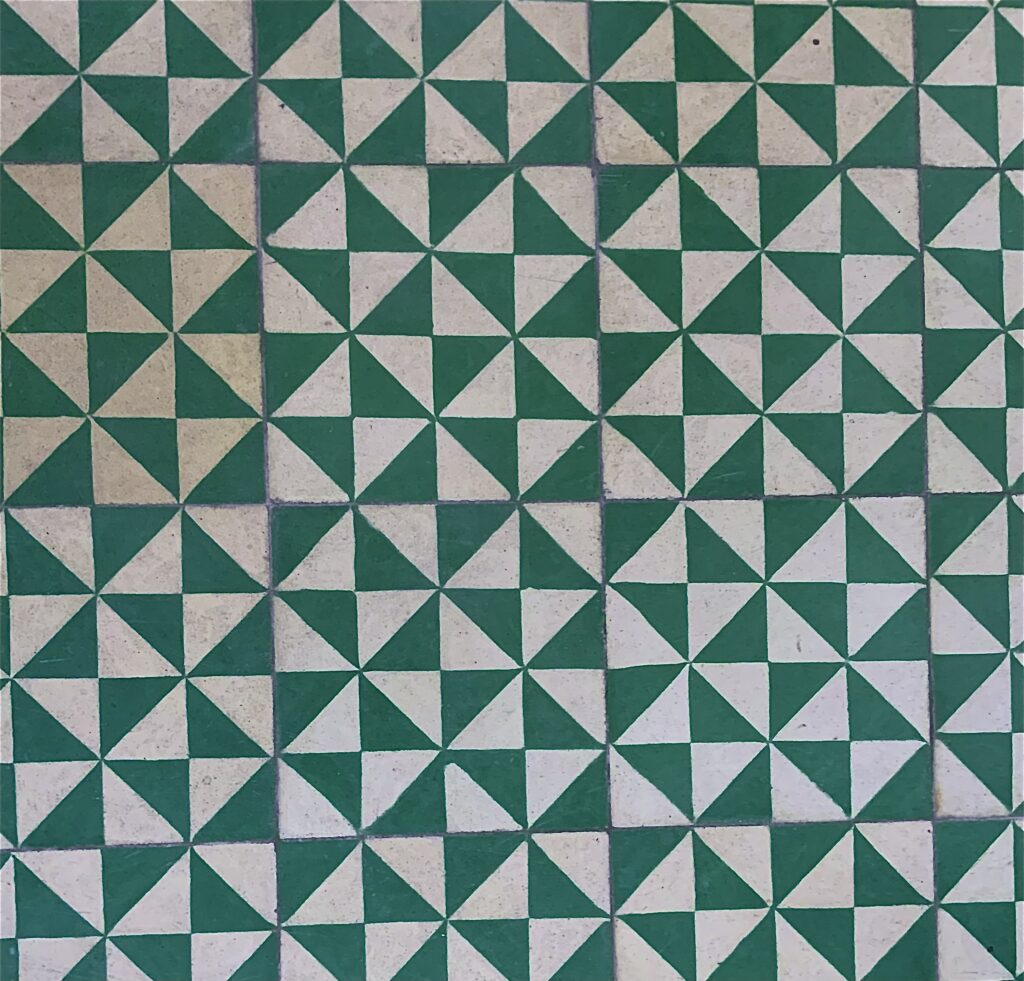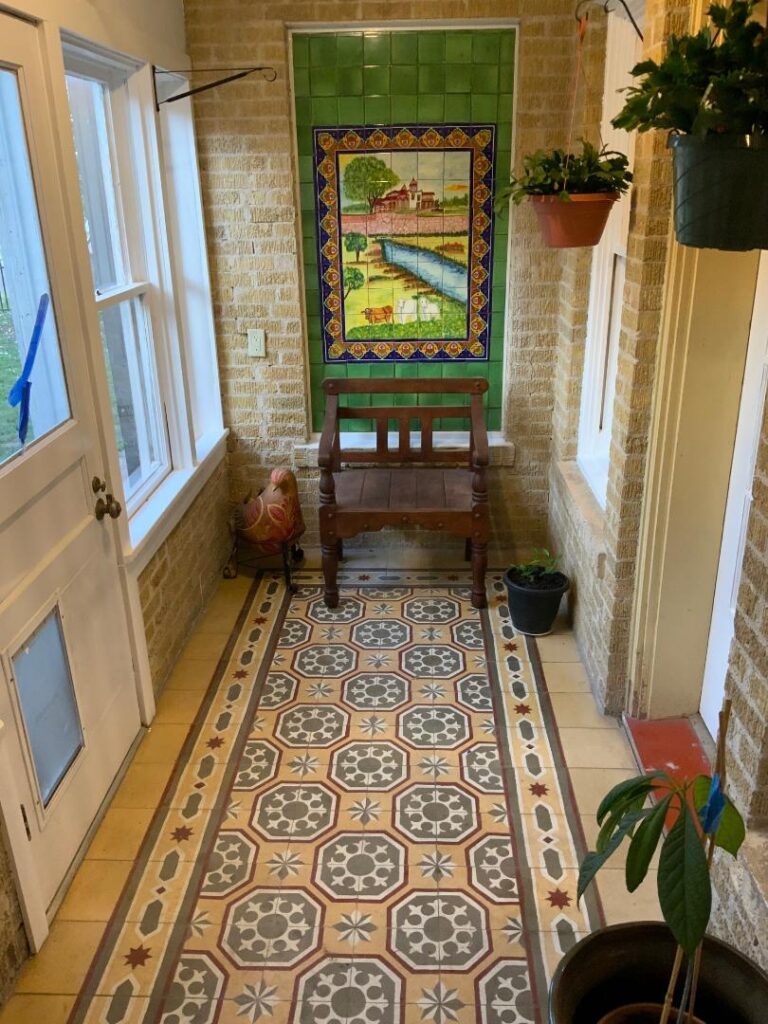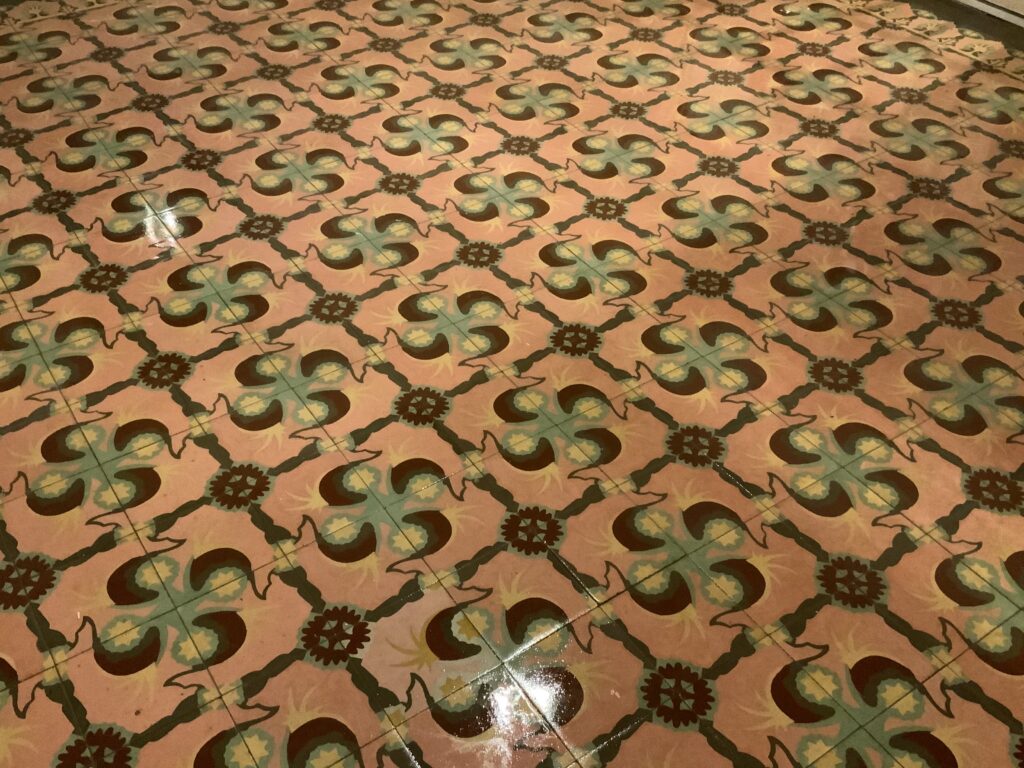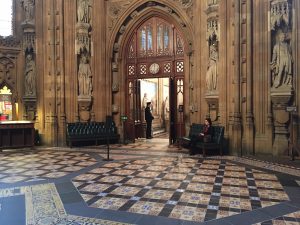
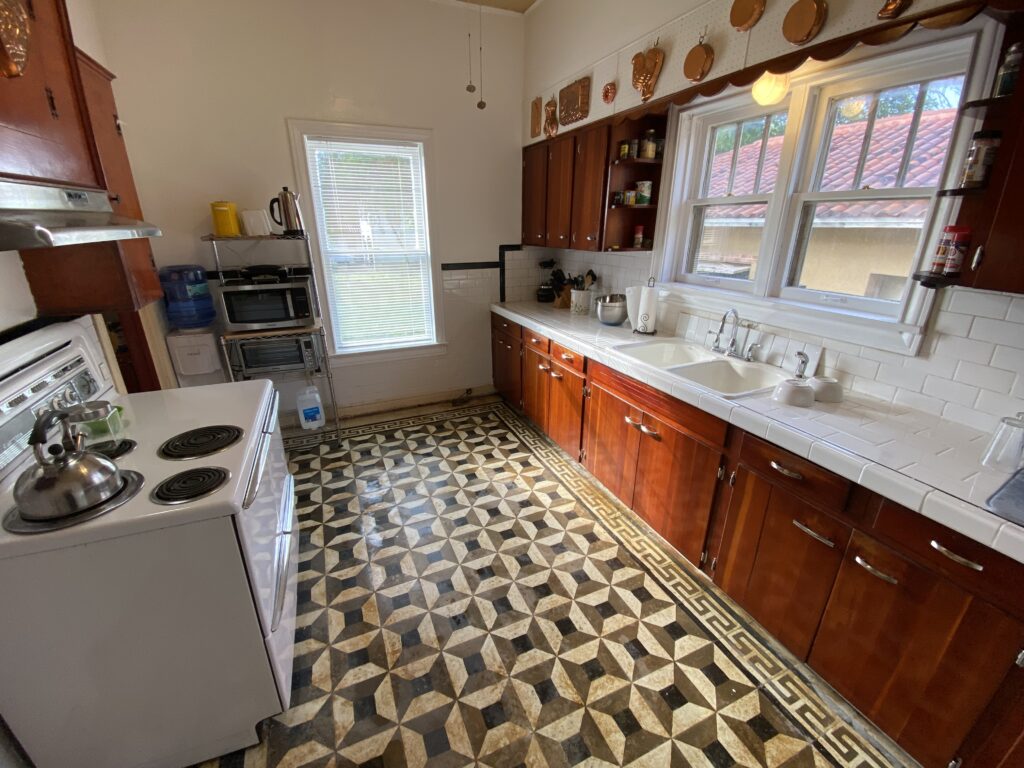
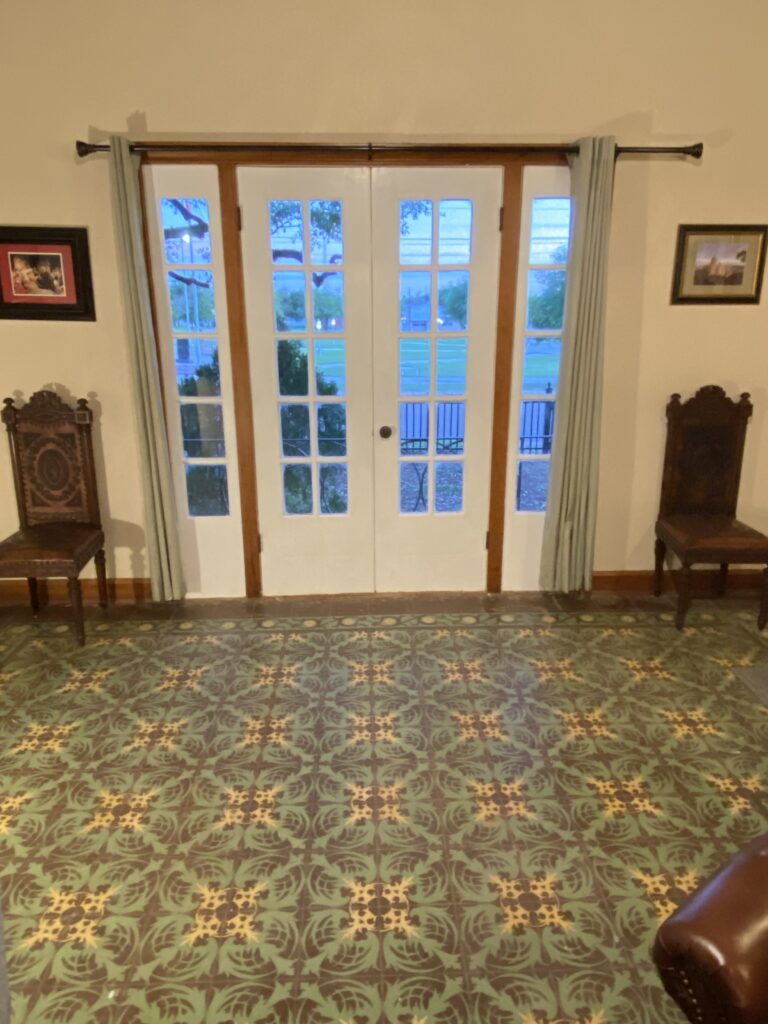
What is
Encaustic Tile?
Encaustic or inlaid tiles were made originally from the 12th to 16th Centuries in monasteries throughout Europe but the skill was largely lost when Protestant Reformation swept the continent in German and English speaking areas. Burning Catholic Monasteries by Protestant Monarchs meant the loss of many advanced trade skills honed by monks over centuries along with classic libraries full of original works in Greek and Latin.
Encaustic tiles made a comeback in the later 1800’s. Now called “Victorian tiles” in the UK, many private homes in Italy and Spain are adorned with decorative floors made from encaustic cement tiles using similar methods of creating decorative copper moldings so each color of cement can be poured individually into each tile mold.
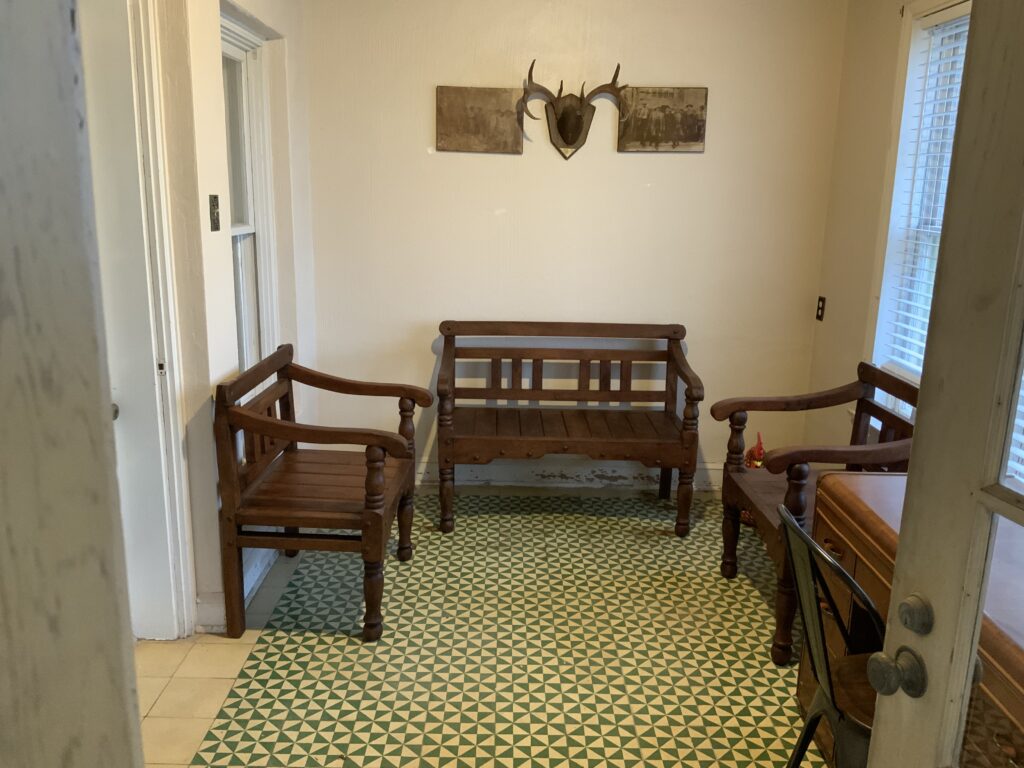
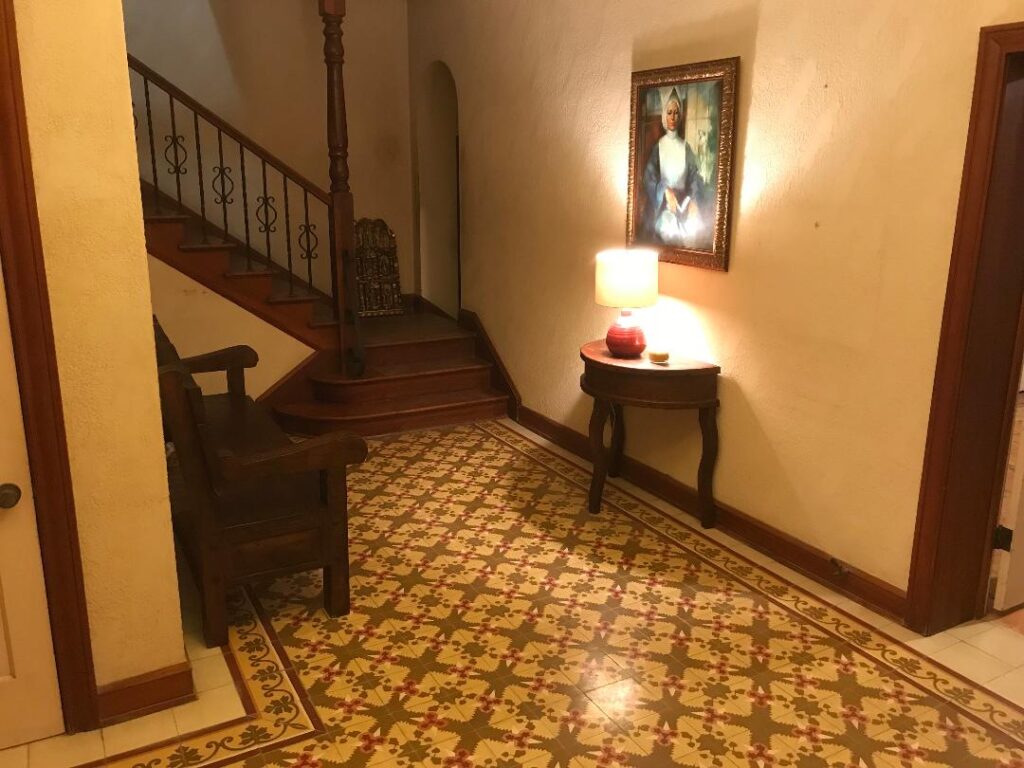
What can only be described as a fusion of the Spanish-Moroccan and Mediterranean styles with a splash of Victorian details the Villa Sanabria’s custom encaustic tile floors are well preserved examples of a largely lost industrial art having been covered for decades by carpet or as in the case of the kitchen; 1950’s glue down tiles with too much glue. Unlike modern tile flooring, each pattern has a unique border and solid color border tiles to fit each room exactly like a custom Persian rug made to fit contours and corners of each room exactly.
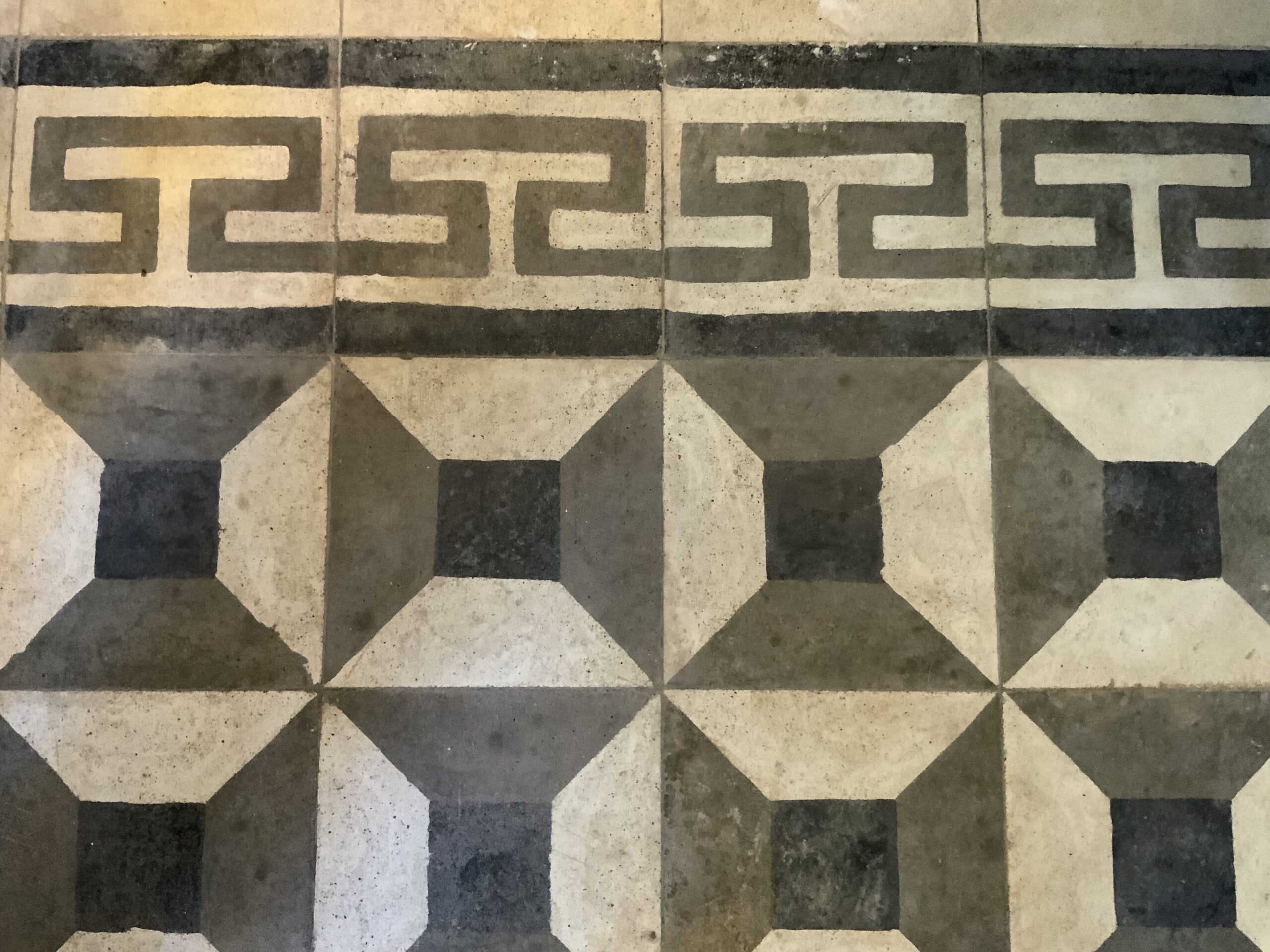
1930's Art Deco Design
Found under the 1950's glue down tiles is this art-deco encaustic floor design from the kitchen and butler's pantry.
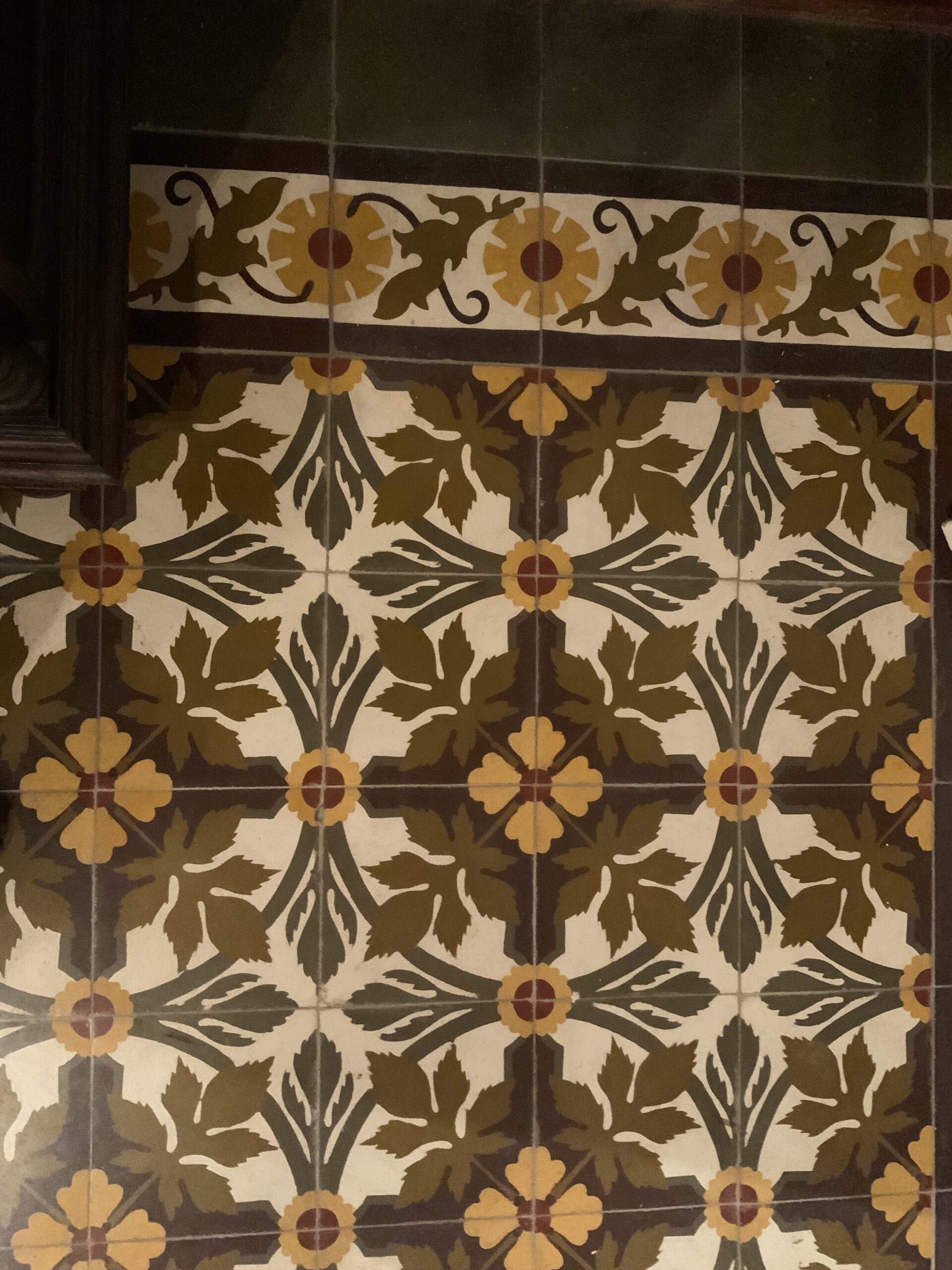
Formal Dining Room
The formal dining room tile resembles Mexican floor styles in public buildings and grand homes built during the 1930's in various regions of Mexico.
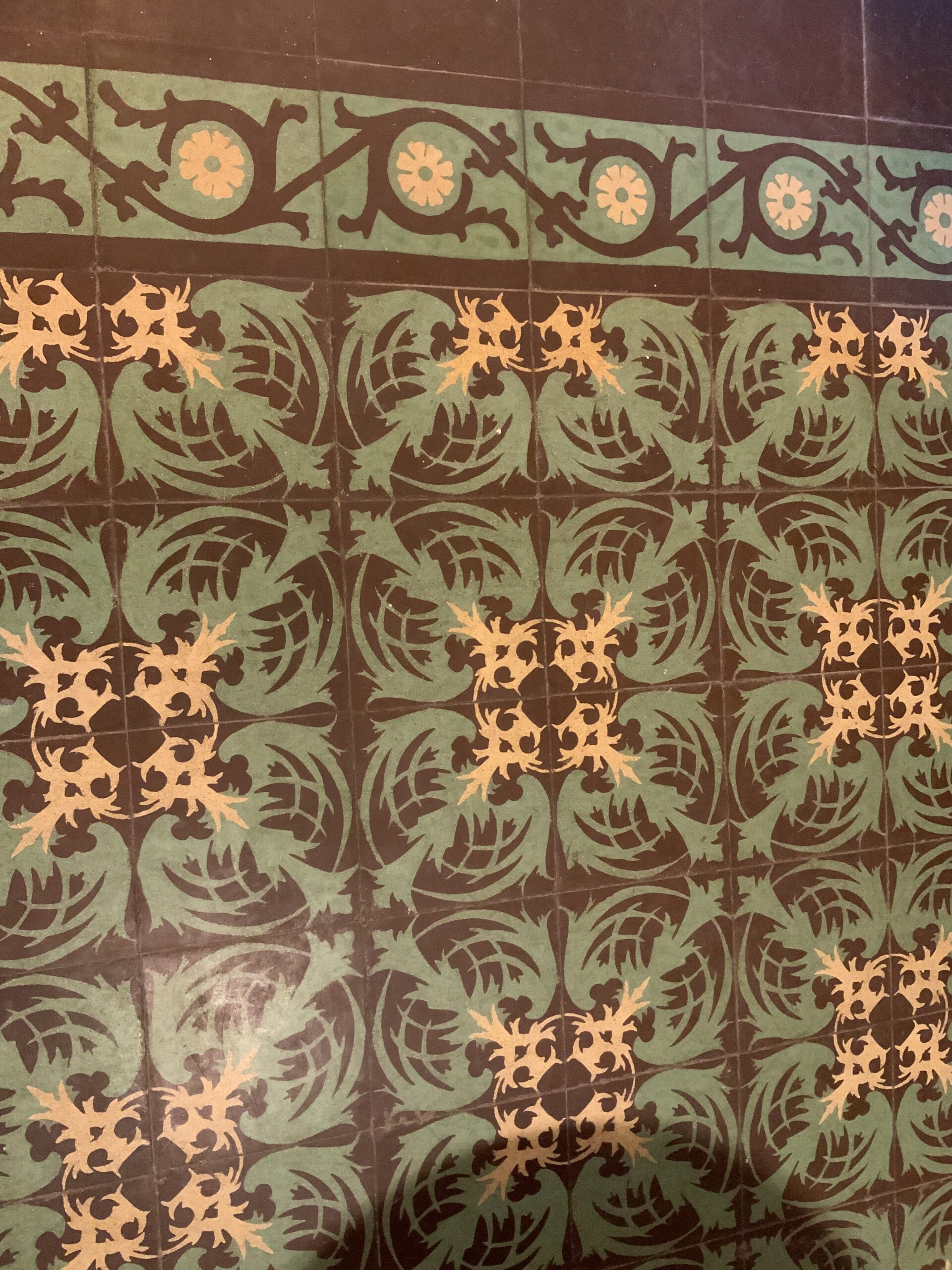
Dark & Detailed Parlor Floor Design
Heavy use of greens and browns in the parlor floor design discovered under layers of modern flooring appears influenced by the Moroccan designs found in Southern Spain.
Historic photos from the Martinez family at the Villa prior to these custom made encaustic floors later being covered by carpet and vinyl flooring. Only the entry, formal dining and rose room tiles were visible when the renovations of the Villa began in 2018. Today, encaustic flooring designs are making a come-back and available at most home stores except only in ceramic tile designs that mimic encaustic tiles.
Inside the Villa
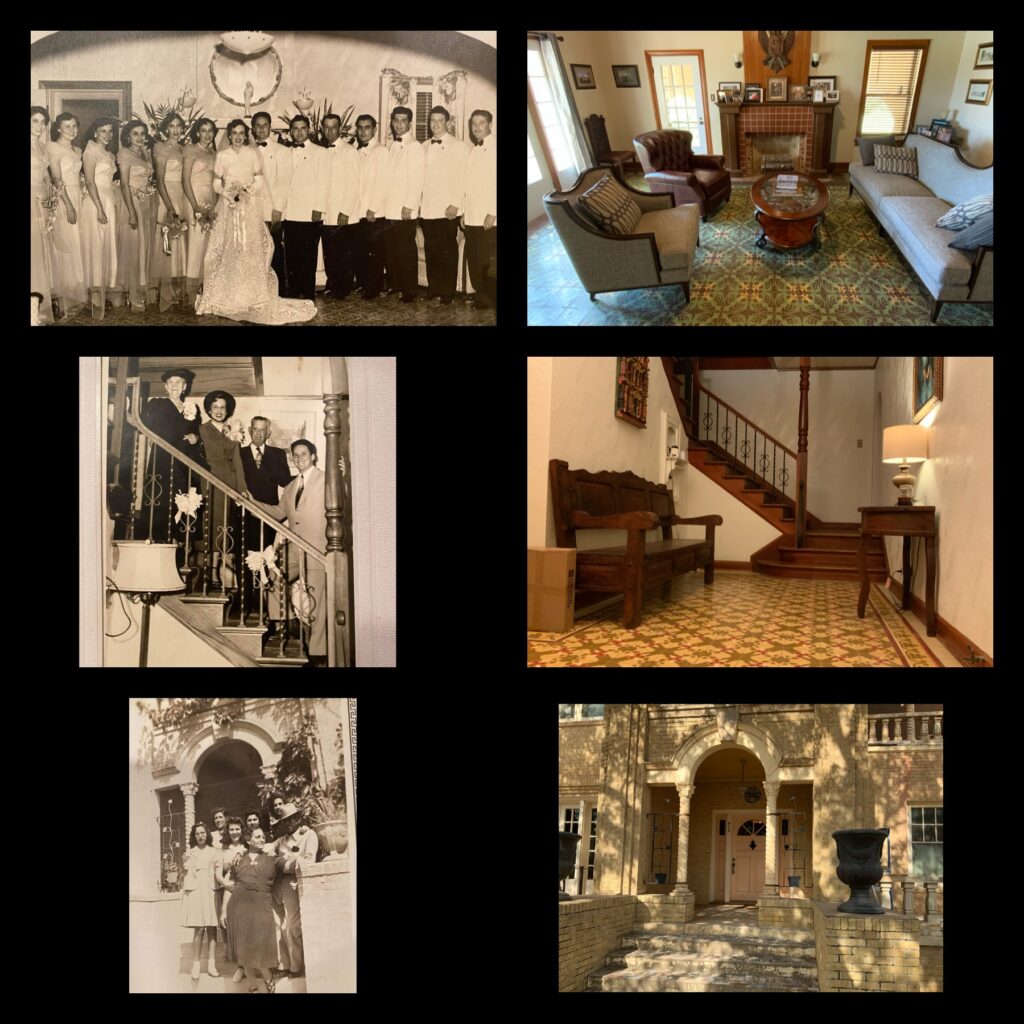
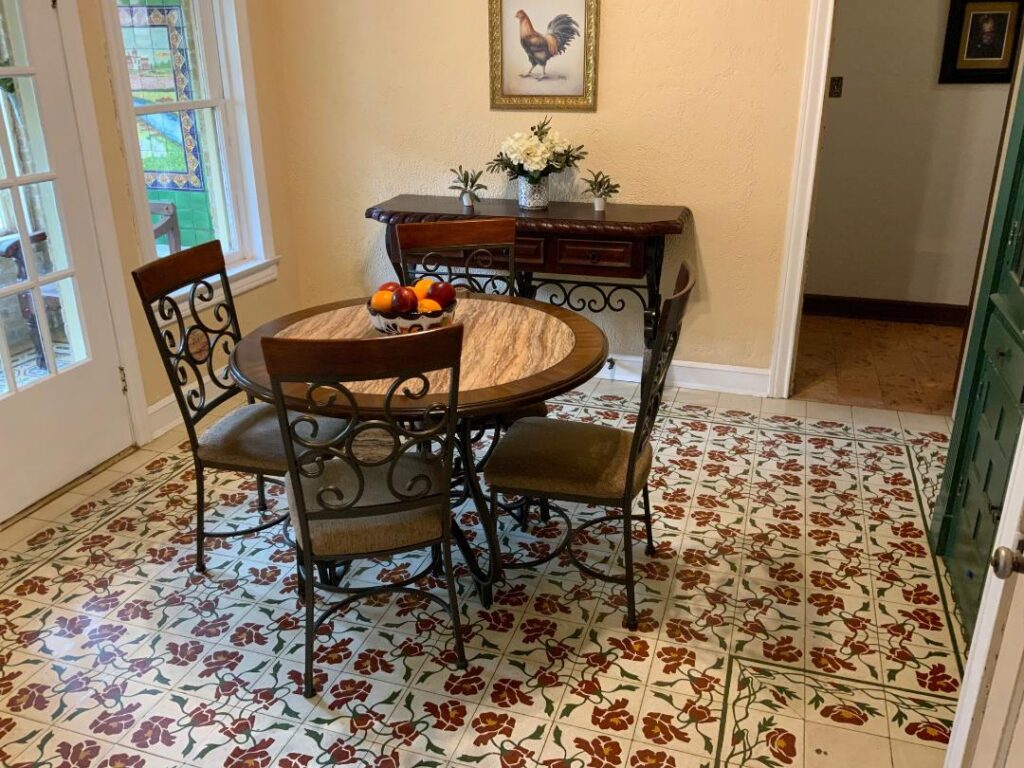
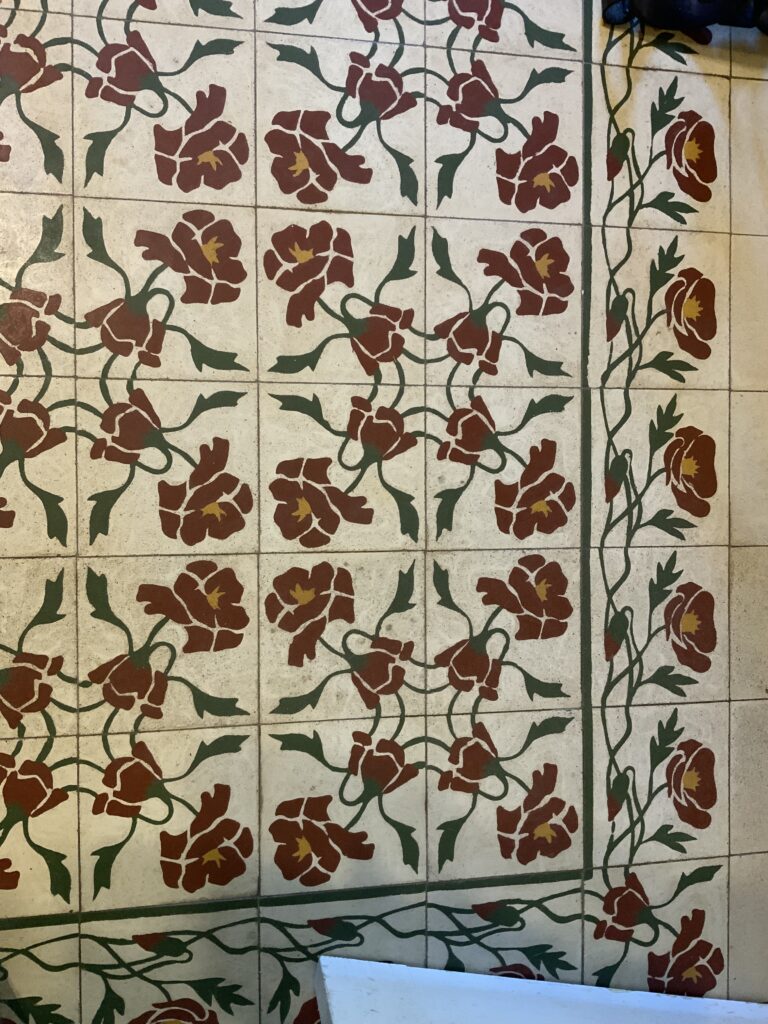
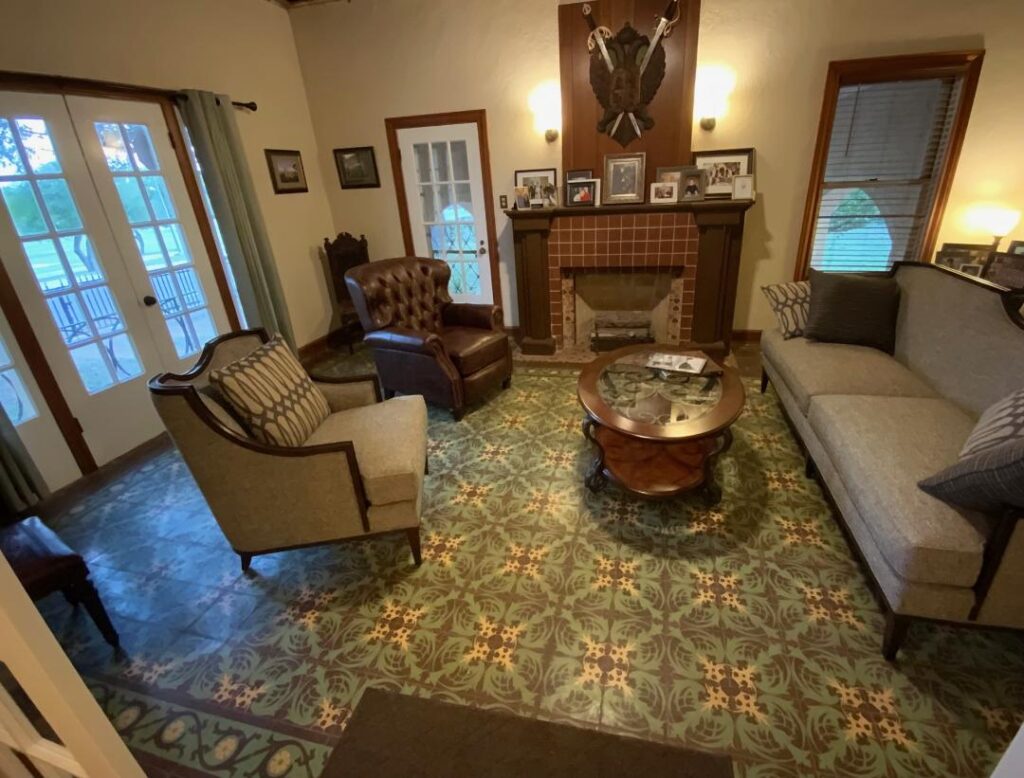
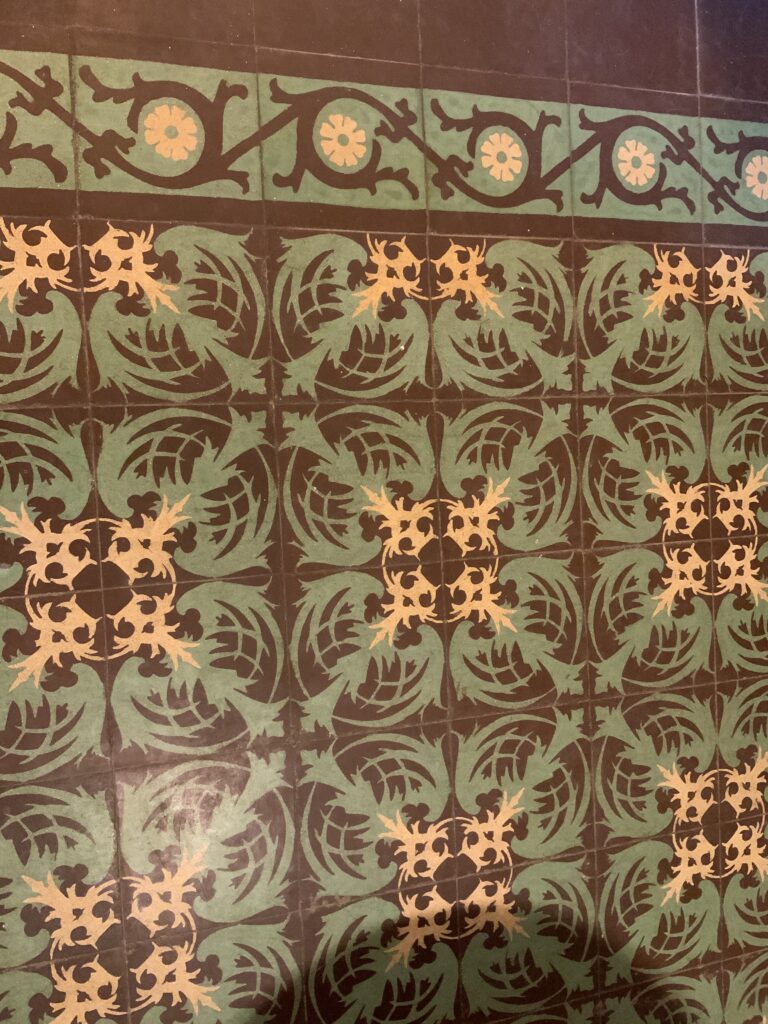
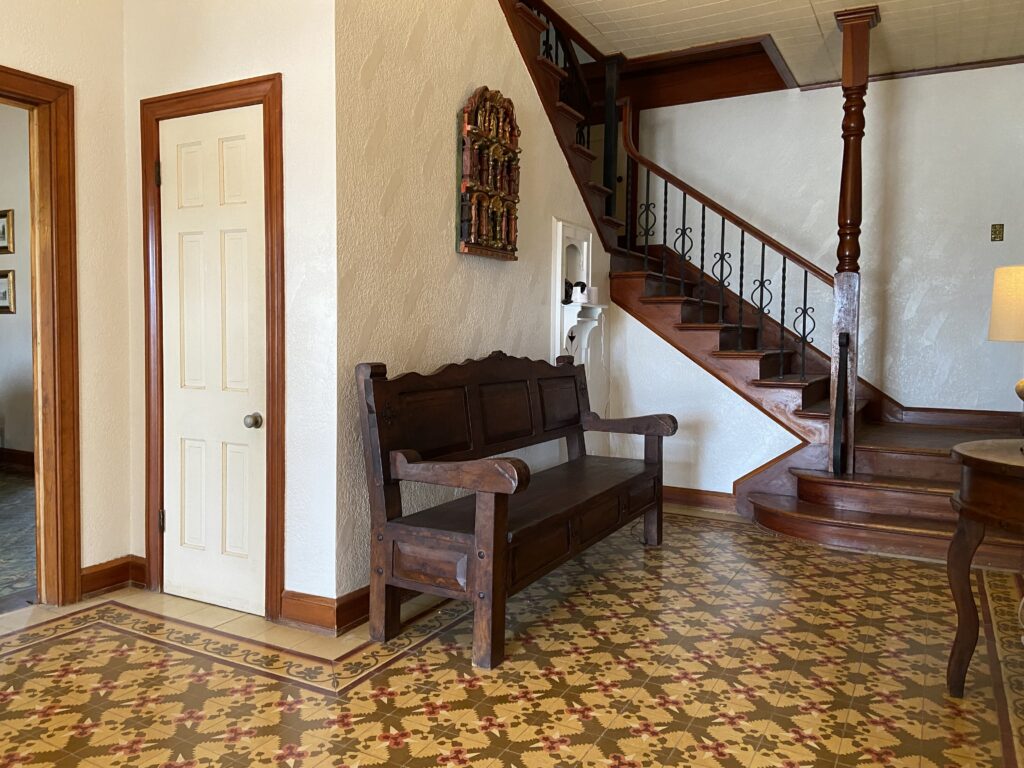
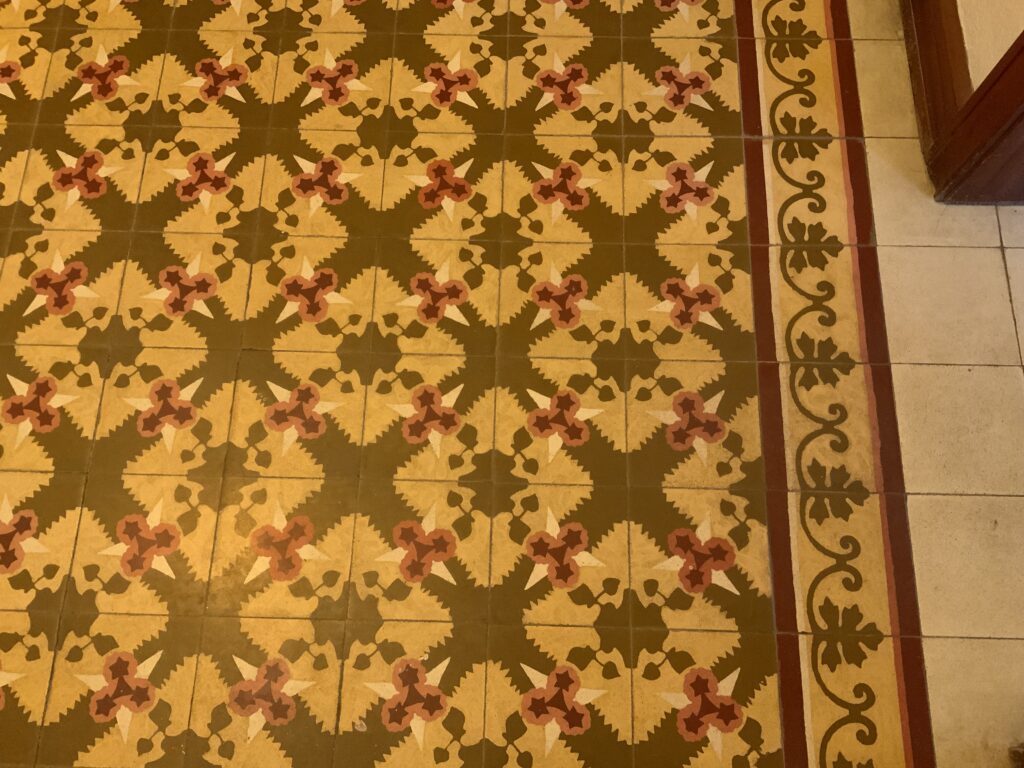

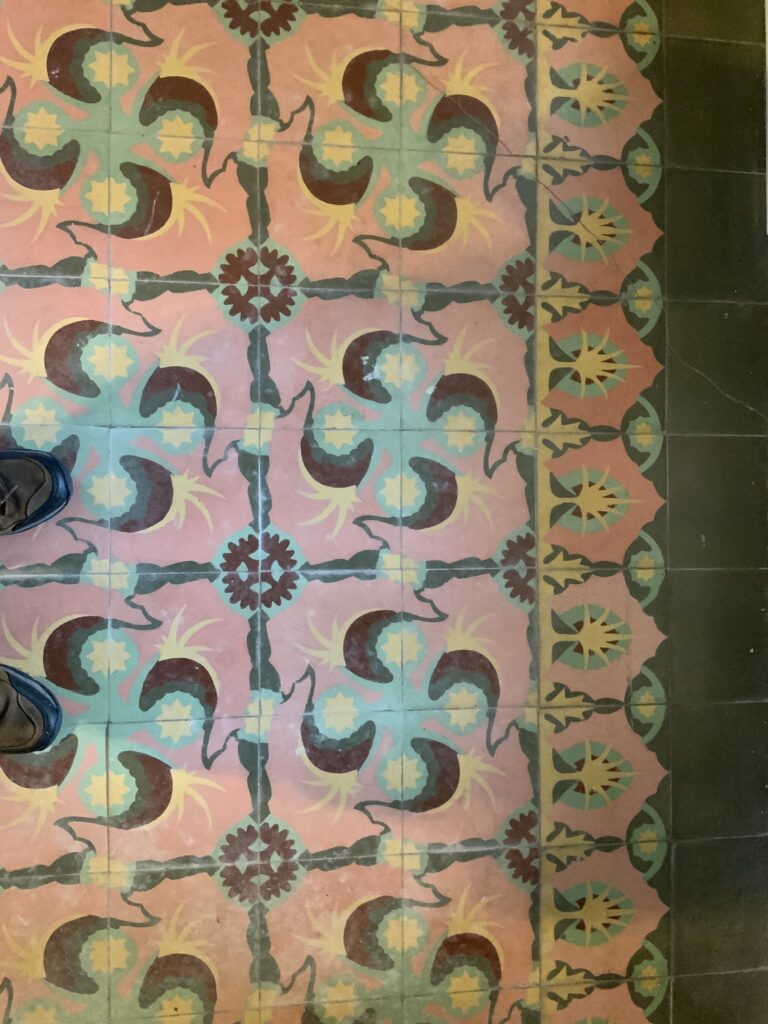
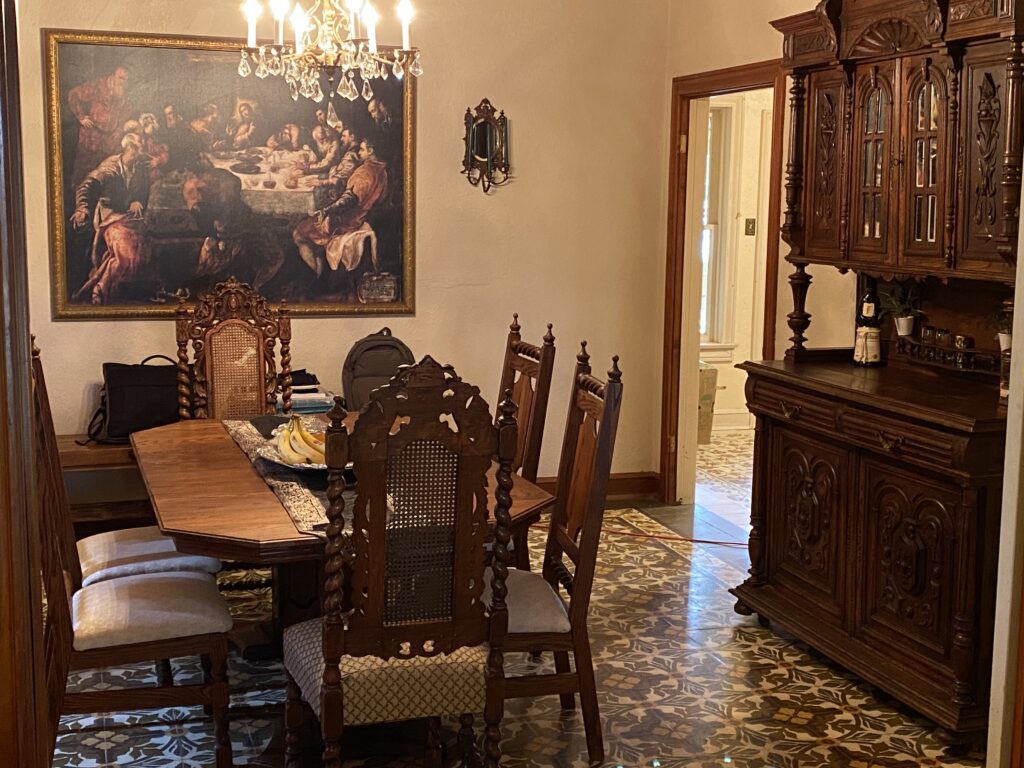
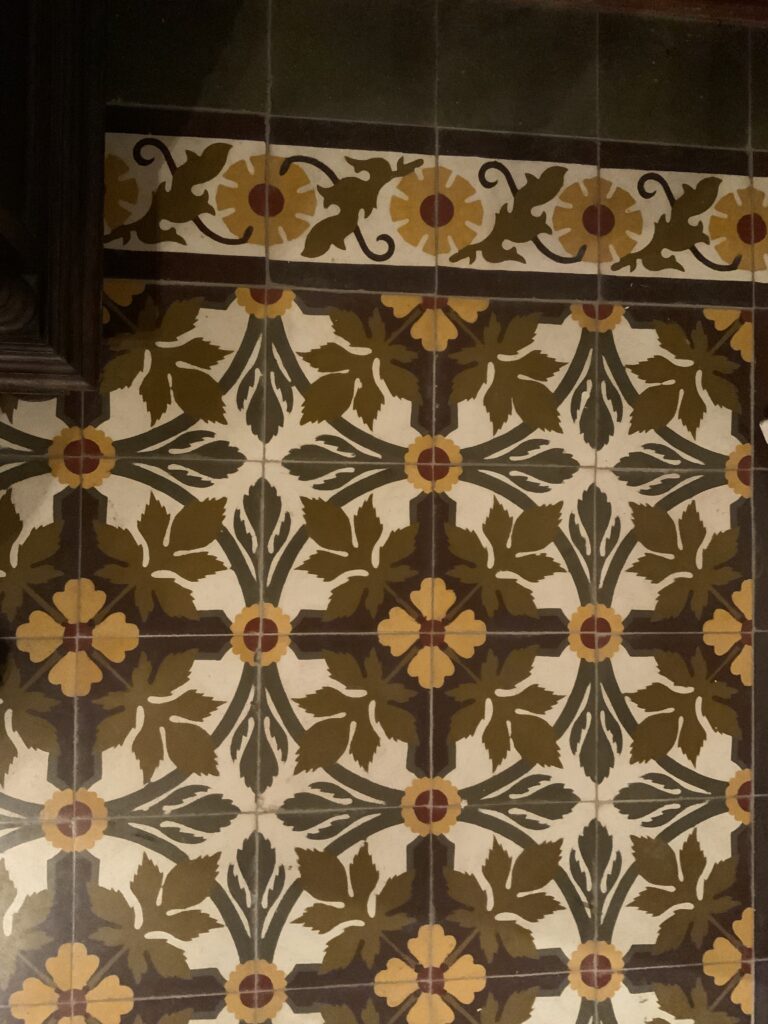

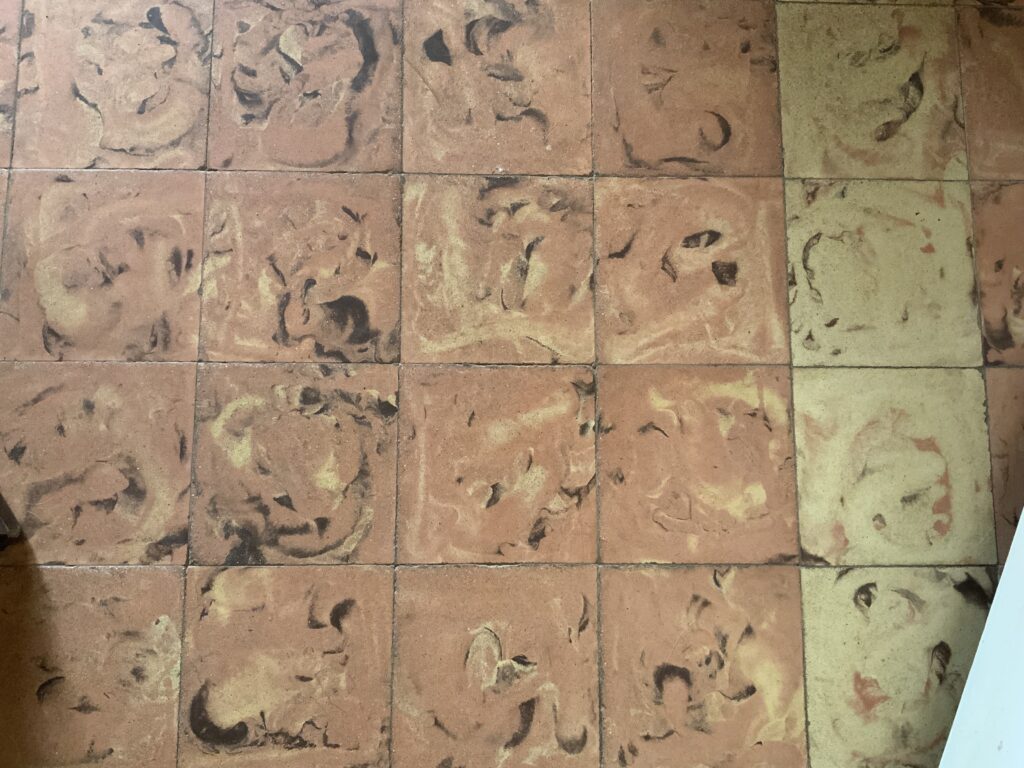
Dr. Homero Martinez (1912-1993) served as the Jim Hogg County Judge from 1961 to 1978. He would often meet constituents in a small office constructed into the church patio of the Villa which features the unusual cement tile floor design below. His wife, Beatrice Garcia Martinez, was the last Martinez to reside at the Villa before she passed in 2012.
